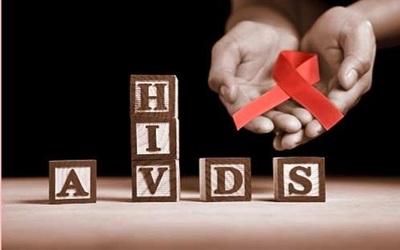HIV stands for Human Immunodeficiency Virus. HIV is a virus that gradually attacks the immune system,
[the_ad id=”6085″]
which is our body’s natural defence against illness. If a person becomes infected with HIV, he will find it harder to fight off infections and diseases. The virus destroys a type of white blood cell called CD4 cells and makes copies of itself inside them.
Over a period of time, more and more CD4 cells get killed and our body finds it difficult to fight against germs that cause infection. Then, the person develops AIDS or Acquired Immuno Deficiency Syndrome. It can take around 10 to 15 years for a person infected with HIV to develop AIDS, which is when his /her immune system is severely damaged. With early diagnosis and effective anti-retroviral treatment, people with HIV can live a normal and healthy life.
Currently 36.9 million people worldwide are living with HIV /AIDS. The HIV virus once infected only sex workers and homosexuals (gays) in 1980s, then spread to the general population in 1990s and 2000.A large number of pregnant women carried the virus and passed it on to their offsprings, resulting in 2.6 million children living with HIV as on date. Now, the epidemic has taken a new turn resulting in 1 in 4 new HIV infections among youth aging 13 to 24.
The Key strategies to end the HIV epidemic is:
- Increasing awareness among population
- Increasing access to testing facilities and fighting stigma
- Increasing the availability and access to ART (Anti-Retroviral Therapy)
Awareness about how the virus spreads and how we can protect ourselves would greatly help us in ending this epidemic. HIV is found in the following body fluids of an infected person: semen, blood, vaginal and anal fluids and breast milk. The most common way for someone to become infected with HIV is by having an unsafe anal or vaginal sex. One can also get the infection by using infected needles, syringes or other drug-taking equipment (blood transmission), or from mother-to-child during pregnancy, birth or breastfeeding. HIV does not live in sweat, saliva, urine or tears and so cannot be transmitted by casual touch, sharing food, sharing wash rooms or through mosquito or insect bites.
People should be aware of standard precautions. The only way we could protect ourselves from HIV is by considering every person’s blood and body fluids as potentially infectious and taking the necessary precautions. For e.g. Never touch any one’s blood without gloves, make sure needles are sterile while getting tattoos, injections and avoid unprotected sex.
Knowledge, behavioral change and adoption of healthy lifestyle will play a major role in eradication of HIV.
Currently, it is estimated that only 54% of people with HIV are aware of their infection. People, who are unaware of themselves being affected do not get treated and unknowingly, pass the infection to others.
Since, HIV infection does not cause any definite symptoms in the early stage, it is important for people to approach a health care provider and get tested if they think they have put themselves at risk for e.g., unprotected intercourse, needle prick etc. Just like diabetes or high blood pressure no one can tell if a person is HIV positive by looking at him.
The only way to tell if a person has HIV is through the HIV Antibody Test, which detects the presence of antibodies produced by the body in response to the HIV virus.
HIV Testing Services (HTS) include the full range of services that should be provided together with HIV testing. This includes pre-test information, post-test counselling, linkage to appropriate HIV prevention, care and treatment services and other clinical and support services. Currently, these tests are available at all ICTC (Integrated Counseling and Testing Centers) in India.
Every mother is tested for HIV status during her pregnancy as part of the antenatal check-up to avoid mother to child transmission of the virus.
Since, there is stigma in going to ICTC for a test and non-availability of ICTC in most of the areas, few countries have adopted HIV self-testing policies. HIV self-testing is defined as a process in which people can collect their own specimen (saliva or blood), perform a test and interpret the result, often in private or with someone they trust. These are called rapid tests and give the results in just 20 min.
Realizing that being HIV positive does not mean one has AIDS and AIDS is the last stage of HIV infection, would encourage more people to get tested
Integrated Approach to the Treatment
People living with HIV are bothered by various medical and social challenges.
They are susceptible to other infections like TB, brain infections, skin infections etc. called opportunistic infections. They are also troubled by social stigma and financial burden of treatment.
The phase IV of NACP (National AIDS Control Programme) focuses on comprehensive care and support consisting of
- Anti-retroviral treatment (ART), including second line
- Management of opportunistic infections including TB
- Positive preventions
- Facilitating social protection and insurance for people living with HIV through linkages with concerned Departments/ Ministries.
Through these measures and the masses’ support, the world hopes to end the HIV epidemic by 2030.
Source:

